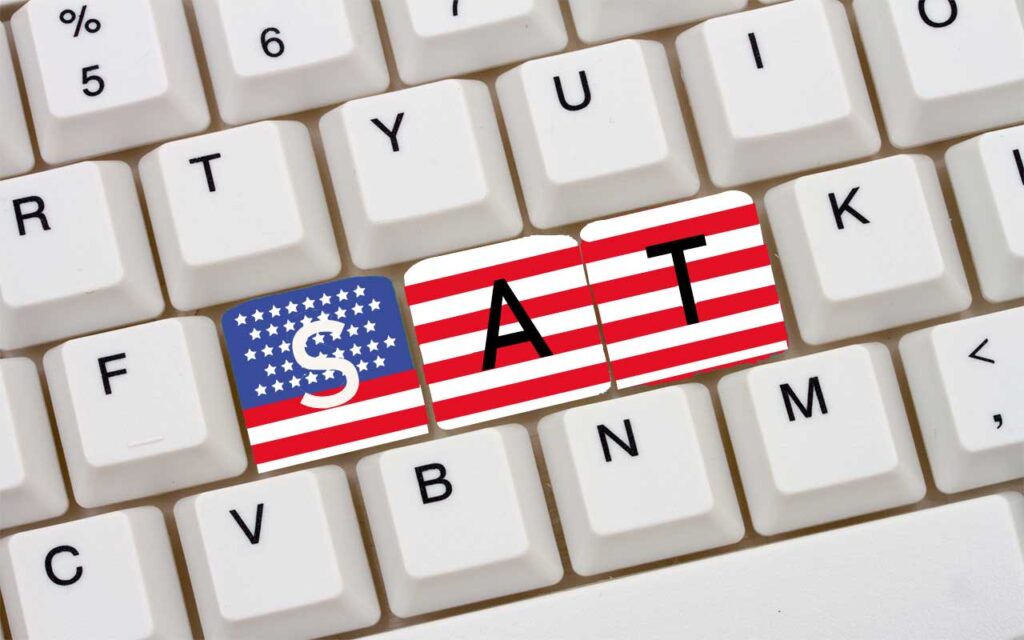Punctuate SAT Possessives and Punctuation Marks in Digital SAT for ESL Students

Home > digital SAT course > punctuate
There are several questions on how to punctuate SAT texts, and we are covering two areas of digital SAT punctuation here:
- using an apostrophe in possessives
- using commas, colons, semicolons or dashes between clauses
It is suggested you learn the rules and look at how to answer the questions before you try the practice questions, for both areas.
LESSON 6
Part A – Work in pairs
- Learn the plural and possessives – how to use an apostrophe
- read & understand the grammar rules
- see how to answer the questions
- test yourself with the practice questions
- Learn the punctuation – how to use a comma, colon, semicolon or dash with clauses
- read & understand the grammar rules
- see how to answer the questions
- test yourself with the practice questions
NOTE: Although there are many examples, there are many possible types of grammar questions in these two areas, so not all examples are covered. It is suggested you practice both Khan Academy and Bluebook to experience different types of questions.
Part B – Test your grammar so far (see below)
SAT Punctuate
There are some common rules for both apostrophes with possessives and commas, colons, and dashes in punctuation.

Apostrophe rule 1
Use 's after a single possessive noun

Apostrophe rule 2
Use s' after a plural possessive noun

Apostrophe rule 3
There is no apostrophe after a possessive pronoun


Punctuation rule 1
Use a comma to separate clauses generally

Punctuation rule 2
Use a colon before a list or semicolon before another independent clause

Punctuation rule 3
Use a dash before an nonessential clause
Part B – Grammar so far
What SAT grammar questions are there?
On the SAT, these Standard English conventions are broken down into two categories:
- Form, structure, and sense – completed
- Boundaries – to do
Form, structure and sense practice
Khan Academy – all form, structure and sense questions together
SAT grammar practice – if you need practice on one area
Alps Academy
Khan Academy
Grammar Lessons
Grammar to come
Types of Boundary Questions
Boundaries questions focus on how phrases, clauses, and sentences are linked together in written English.
Boundary questions focus on these Standard English conventions:
- Punctuation
- You’ll need to know when and where to use (and not use) different punctuation marks. Correct punctuation is essential for all boundaries questions.
- Linking clauses
- You may be asked to link clauses using coordination, subordination, or end punctuation.
- Supplements
- You may be asked to format and punctuate supplemental information provided within a sentence.
Student Advice for Punctuation Questions
Independent clause: makes sense on its own
Dependent clause: doesn’t make sense on its own
How do you link these clauses?
–punctuation [if it’s a question, use a (?) if it’s a statement, use (.)]
(^can only be used at the end of independent clauses)
–coordination [use a comma (,) or a coordinating conjunction (FANBOYS)]
(used to link independent clauses)
–subordination [use a comma (,) or a subordinating conjunction (eg: although, since, because, while, when, and after),–must use a comma with them (unless sentence begins with independent clause then the dependent clause]
–semicolons [ used to link two independent clauses without any conjunction.]
How to identify linking clauses questions?
-choices add or remove commas and FANBOYS
-choices add or remove end punctuation
-choice contains a semicolon
Tip—> Check if what comes before and after the blank are independent clauses. If one side of the blank is not an independent clause, then you’re likely dealing with a supplements or punctuation question (linking clauses question).






